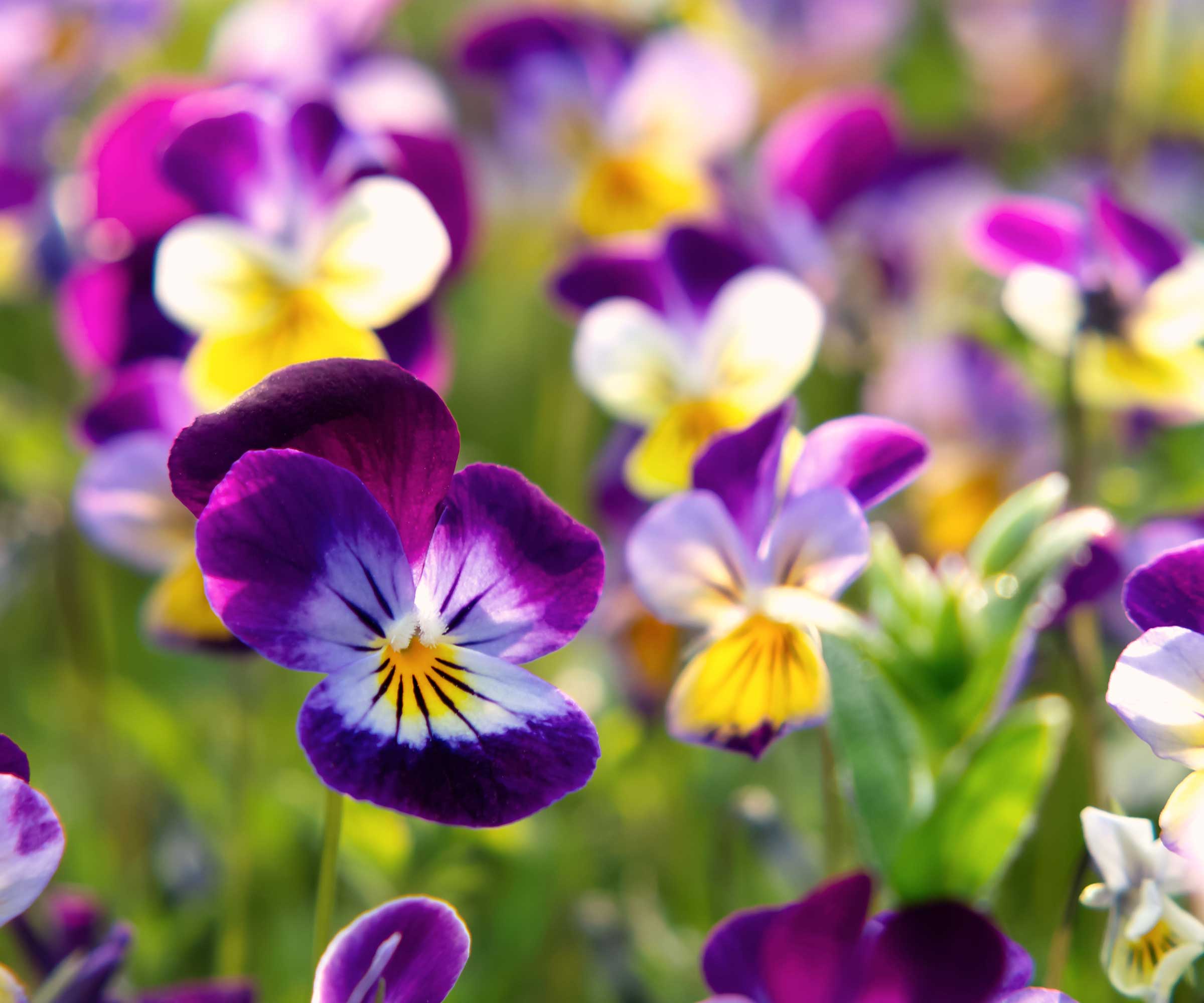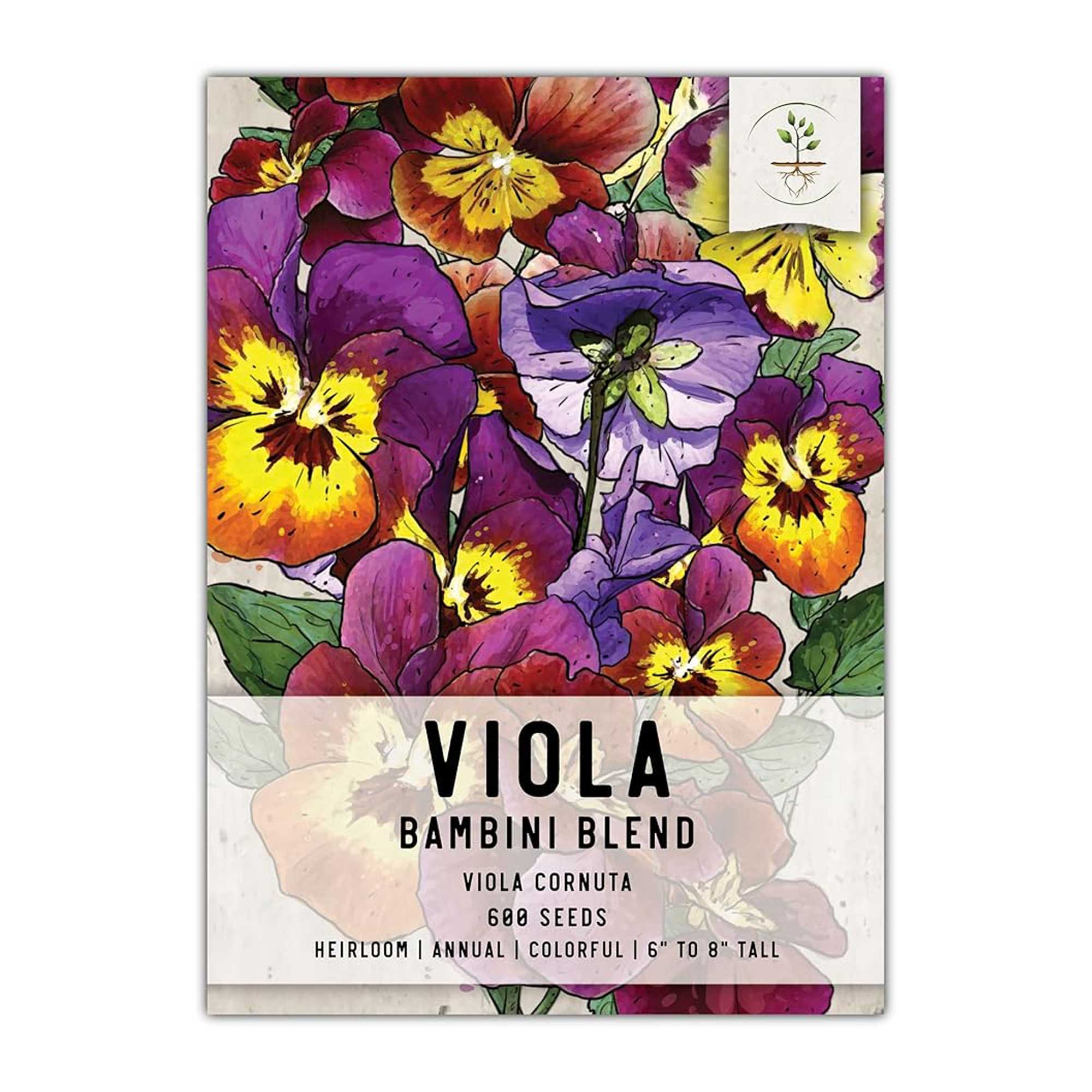How to grow and care for violas – for cheery winter color in pots and borders
Experts share their top tips for these pretty plants, including advice on watering, deadheading, and growing them from seed


If you're looking to add a splash of early (or late) color to your yard, violas should be high on your list. These delicate bloomers come in a myriad of jewel-like shades and are super easy to look after, even for beginner gardeners.
Violas are related to pansies, with the latter bearing larger flowers on often taller stems. Most violas are suitable for hardiness zones 3-9, and they tend to be grown as cool-season annuals, as they don't do well in hot summer heat.
I asked gardening experts for their advice on growing and caring for these charming flowers. Below, they share their tips on watering, soil type, and more.

Violas work well in hanging baskets
How to grow viola plants
Viola plants are often available from garden centers or online nurseries. 'Violas can be planted in early spring for a cool-weather display, or in late summer to early fall for autumn blooms,' says Carrie Spoonemore of Park Seed's From Seed to Spoon app. 'They can also be planted in winter in mild climates, as they tolerate frost and cooler temperatures.' They make particularly uplifting additions to winter pots, for instance.
You can also propagate violas from seed. To do so, Rebecca Sears of Ferry-Morse recommends sowing them indoors about 8-12 weeks before the last expected frost.
'Use a light, well-draining seed-starting mix and keep the soil moist but not soggy,' she says. 'Place the trays in a bright spot with sunlight for germination, which typically takes 10-14 days.' Transplant them into individual pots once seedlings have sprouted, she adds, and remember to harden them off before planting them outdoors.

Carrie currently makes the educational content for Park Seed’s From Seed to Spoon app. You will find her frequently in their YouTube videos, demonstrating gardening techniques from their 5-acre homestead.

As CMO and resident green thumb for the Green Garden family of brands, Rebecca Sears nurtures the company's heritage but also looks to develop new products and solutions to help gardeners of all skill levels fuel their passion and become more successful in the garden. Rebecca has been gardening from coast to coast, first realizing her passion while living in Portland, Oregon, inspired by the public gardens throughout the city. When she relocated to the northeast, she built upon her knowledge and craft, and now her backyard garden grows larger each year.
Growing habits for violas

Some varieties have distinctive markings
While vibrant petunias are the perfect plant for summer hanging baskets, violas are a lovely replacement for the cooler months. They also work well in window boxes, where their delicate blooms can be easily admired.
Design expertise in your inbox – from inspiring decorating ideas and beautiful celebrity homes to practical gardening advice and shopping round-ups.
There are all sorts of varieties to choose from, including the golden-toned 'Sorbet® Honeybee', as well as 'Johnny-Jump Up' (available from Burpee) which combines purple and yellow shades.
Growing guide for violas

Violas like sunshine, but not too much heat
Soil: Carrie says that violas thrive in well-draining, fertile soil. 'They prefer a slightly acidic to neutral pH (5.5–7.0). Amend the soil with compost or organic matter before planting to provide nutrients.'
Light: According to Rebecca, violas can grow well when planted in areas that receive at least six to eight hours of full sunlight per day. 'Keep track of climbing temperatures as you head into the warm weather months, though, as too much summer heat can cause your violas to fade,' she adds. 'Providing your violas with some shade throughout warmer periods of the day can help maintain their vibrant colors without hindering their growth.'
Watering: Don't forget to water your violas regularly, particularly if you're growing them as part of a container garden. 'Keep the soil consistently moist but not waterlogged,' says Carrie.
Fertilizing: Feed violas regularly throughout the growing season to help them bloom well. A high-potash fertilizer can have good results.
Pruning: It's worth deadheading wilted blooms for a longer display. 'This helps the plant direct its energy toward producing new flowers rather than seeds,' says Carrie.
Toxicity: Violas are generally considered non-toxic to cats and dogs, although excessive consumption should always be avoided. For humans, some varieties of viola are often used as edible flowers – but avoid ones grown with pesticides and always check specific varieties are safe before trying this at home.
FAQs
How long will violas bloom?
'Violas bloom in early spring and can continue flowering through late spring or early summer,' says Carrie. 'With proper care and deadheading, they may also bloom again in the fall. Their blooming period typically lasts 8-12 weeks, depending on the weather and growing conditions.'
Can you grow violas indoors?
'Indoors, they require bright, indirect light, such as a sunny window or grow lights, and cool temperatures,' says Carrie. 'However, they generally perform best outdoors, benefiting from fresh air, cooler conditions, and natural sunlight.'
Consider growing African violets indoors, instead, which are easy houseplants with pretty purple blooms.
Try pairing your violas with other autumn plants for pots for a gorgeous display – our guide has lots of ideas.

Holly started writing about gardening five years ago, and she is a regular contributor to Homes & Gardens. She has also written many gardening features for Woman & Home and Real Homes, too. She has previous experience as a professional gardener, where she helped to plant and maintain private gardens. Holly has also looked after allotment plots over the years and loves to grow her own flowers and veggies from seed. In her spare time, she enjoys visiting local gardens, botanical drawing, and tending to her ever-growing collection of houseplants.

